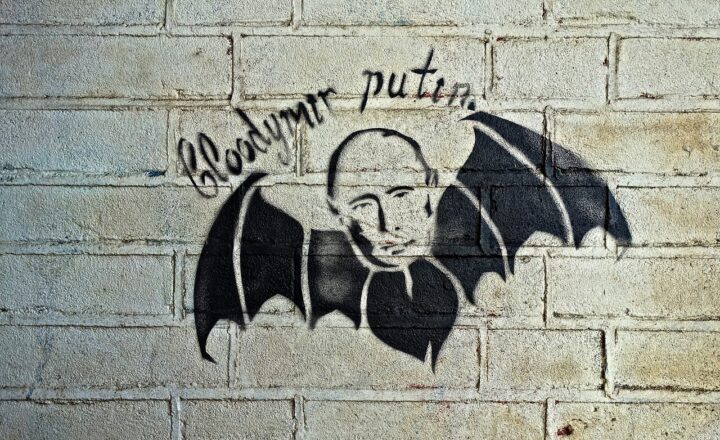
Cult classic movies have a unique allure, captivating audiences long after their initial release. Often unconventional, thought-provoking, or downright bizarre, these films gather dedicated fan bases and influence future generations of filmmakers and moviegoers. This article delves into the world of cult classics, exploring their defining qualities, cultural significance, and lasting impact.
1. What Are Cult Classic Movies?
Cult classics are films that develop a dedicated and passionate following, often characterized by their unconventional narratives or idiosyncratic style. Unlike mainstream films that achieve mass appeal, cult classics frequently garner attention through word-of-mouth, midnight screenings, and community events.
Examples of cult classics include:
- The Rocky Horror Picture Show (1975): A musical comedy horror film that has inspired audience participation rituals that have become a staple of midnight screenings worldwide.
- Fight Club (1999): A film that critiques consumer culture, prompting discussions around masculinity and identity, gaining notoriety for its rebellious themes.
- The Big Lebowski (1998): Known for its quirky characters and memorable quotes, the film embraces absurdity and has cultivated a devoted fan base that celebrates it through events like Lebowski Fest.
Despite often underperforming at the box office initially, the revival of cult classics underscores their significant cultural impact, illustrating that films can resonate with audiences regardless of commercial success.
2. The Characteristics of Cult Classics
Cult classic films often display specific characteristics that set them apart from mainstream cinema:
- Unconventional Storylines: Cult classics frequently tell stories that deviate from the traditional hero’s journey, challenging expectations and embracing absurdity. This unpredictability tends to intrigue viewers, drawing them into the film’s unique world.
- Memorable Characters: The characters in cult classics often embody eccentric traits or lead unusual lives, making them unforgettable. Think of characters like Edward Scissorhands or The Dude from The Big Lebowski—both have become icons in pop culture.
- Aesthetic and Technical Innovation: Cult classics often push the boundaries of filmmaking techniques, excel in specialized aesthetics, or utilize unconventional cinematography to provide a distinctive viewing experience. Films such as A Clockwork Orange employ stylistic choices that contribute to their cult status.
- Themes of Rebellion or Defiance: Many cult classics express themes of rebellion against societal norms, making them appealing to viewers seeking to escape conventional expectations. This resistance to the norm can resonate strongly, especially among younger audiences seeking authenticity and truth in art.
These defining attributes contribute to why cult classics maintain relevance in today’s cinematic landscape, continuing to inspire discourse and fandom.
3. The Cultural Impact of Cult Classics
Cult classics often address themes that resonate across different eras, allowing them to influence society beyond their initial release. Their capacity to challenge cultural norms sparks important conversations:
- Social Commentary: Many cult classics tackle controversial subjects head-on, leading to discussions about societal issues. For example, Chariots of Fire explores themes of faith versus doubt, while The Breakfast Club highlights the social divisions within high school settings.
- Influence on Future Filmmakers: Filmmakers like Quentin Tarantino and Wes Anderson cite cult classics as inspirations for their distinctive styles. The creativity and freedom exhibited in these films encourage modern directors to take risks, shaping the future of cinema.
- Community and Fandom: The communal experience of sharing a beloved cult film fosters a sense of belonging and connection. Fans organize events, screenings, and social media groups, cultivating thriving communities devoted to favorite movies and allowing cultural exchanges around their meanings.
Cult classics not only entertain but also empower audiences to think critically about art, identity, and society.
4. Why Cult Classics Matter Today
Despite changes in viewing habits, the essence of cult classics remains relevant. Their legacy is evident in various aspects of contemporary culture:
- Streaming Services and Accessibility: Platforms like Netflix and Criterion Collection have made cult classics accessible to a global audience, allowing new generations to discover them. Curated collections often showcase influential films that spark discussions, ensuring their themes remain alive and relevant.
- Merchandising and Spin-Offs: Many cult classics have expanded into merchandise, remakes, and even stage adaptations, creating new avenues for engagement. For instance, The Rocky Horror Picture Show has inspired merchandise and live performances all over the world, keeping its spirit vibrant and relevant.
- Cultural Identity and Expression: Cult classics often foster cultural identity, enabling viewers to recognize elements of their own experiences reflected on screen. They allow individuals to embrace uniqueness and encourage self-expression, motivating fans to engage artistically, such as through fan art and cosplay.
As society evolves, the question of cultural relevance grows. Cult classics serve as a reminder of cinema’s transformative power and its ability to address pressing issues that still resonate in today’s context.
5. Personal Connection to Cult Classics
The relationships viewers form with cult classics often transcend the screen, allowing for deeper connections:
- Identity Exploration: Individuals often relate to specific characters or themes within cult classics, enabling personal exploration of their values and beliefs. This connectedness can invite introspection, contributing to personal growth and understanding over the years.
- Nostalgia and Memory: Those nostalgic for their cinematic past find solace in revisiting beloved cult classics. The experiences associated with watching these films can evoke strong memories, reinforcing their place in individual and collective culture.
- A Shared Experience: Participating in cult movie screenings or fan events creates a shared experience among diverse groups, fostering a sense of community and togetherness. This shared passion provides a platform for individuals to connect over mutual interests, strengthening interpersonal bonds.
Cult classics continue to foster connections that go beyond mere entertainment, revealing the multifaceted ways films can impact personal lives.
Conclusion
Cult classic movies hold timeless appeal, encapsulating unique storytelling, cultural critique, and community engagement. These films often become touchstones for fans, illuminating sociocultural themes and trends in society. As film continues to evolve, cult classics provide a valuable lens into human experiences through the decades, highlighting their significance that arguably only grows in importance.
Whether a passionate fan or a curious newcomer, exploring the world of cult classic films invites a deeper understanding of not only cinema but also ourselves and the society we inhabit. So, gather your friends, grab some popcorn, and take a journey into the wonderful realm of cult classics—where every viewing can be a new adventure.







